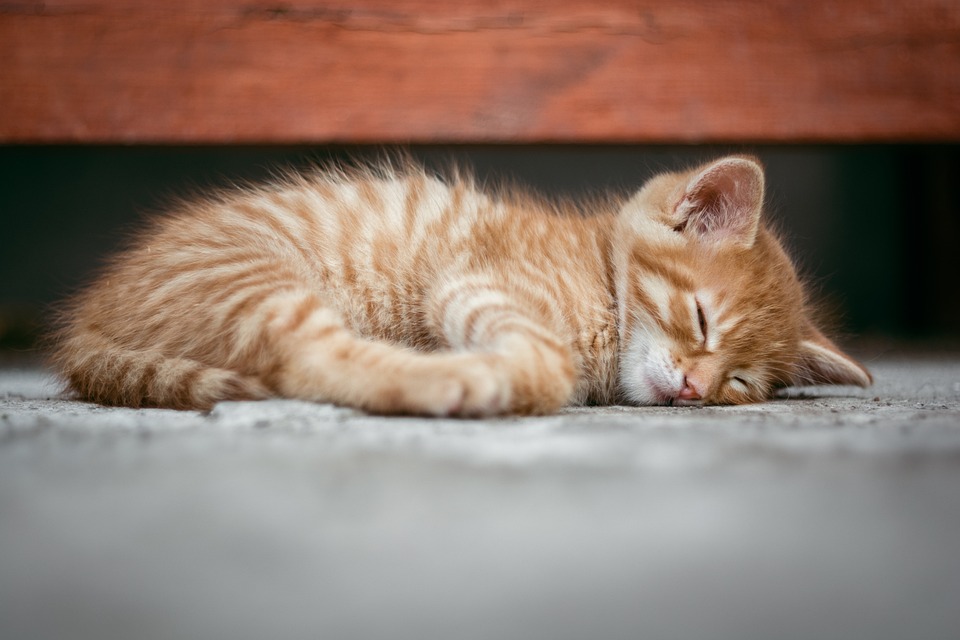Introduction:
The Fascinating World of Cat Behavior
Cats are known for their mysterious and intriguing behaviors. From their graceful leaps to their mesmerizing purrs, they never fail to captivate our attention. One behavior that often goes unnoticed, but plays a crucial role in their overall well-being, is chewing. In this article, we will delve into the science behind chewing in cats and explore its importance in their daily lives.
The Significance of Chewing in Cats
Chewing is a natural behavior that serves various purposes for cats. It is not only important for their physical health, but it also plays a significant role in their mental and emotional well-being. By understanding the biology and different types of chewing behaviors in cats, we can better appreciate the benefits it brings to their lives.
Section 1: The Biology of Chewing in Cats
An Innate Behavior: Why Cats Chew
Chewing is an innate behavior in cats that begins early in their lives. Kittens start exploring their surroundings by mouthing and chewing objects they encounter. As they grow, this behavior continues and serves several purposes.
Dental Health and Oral Hygiene
Chewing helps maintain dental health in cats. By gnawing on objects, they naturally remove plaque and tartar buildup on their teeth. This reduces the risk of dental diseases such as gingivitis and periodontal disease, which can lead to pain and discomfort.
Exercising the Jaw Muscles
Chewing exercises the jaw muscles, keeping them strong and healthy. It also helps cats maintain a strong bite force, which is essential for catching and consuming their prey in the wild.
Stress Relief and Anxiety Reduction
Chewing acts as a stress relief mechanism for cats. It helps them release pent-up energy and provides a sense of comfort and relaxation. Many cats turn to chewing when they are feeling anxious or bored, as it offers a soothing effect.
Section 2: The Different Types of Chewing Behaviors
Exploring the Varieties of Chewing Habits in Cats
Cats exhibit various chewing behaviors, each serving a different purpose. Understanding these behaviors can help us better address their needs and provide appropriate outlets for their chewing instincts.
Gnawing and Biting: Instinctual Behaviors
Gnawing and biting are instinctual behaviors in cats. These behaviors mimic their natural hunting instincts and allow them to practice their predatory skills. Providing appropriate chew toys can help satisfy this natural behavior and prevent them from chewing on inappropriate objects.
Nibbling and Licking: Social and Grooming Behaviors
Nibbling and licking are social and grooming behaviors in cats. Cats use their mouths to groom themselves and bond with their feline companions. This behavior helps strengthen social bonds and provides a sense of comfort and security.
Pica: Unusual Chewing Behavior
Pica is an unusual chewing behavior where cats chew on non-food items such as plastic, fabric, or rubber. This behavior can be a sign of an underlying medical condition or nutritional deficiency. If your cat exhibits pica, it is important to consult with a veterinarian to rule out any health issues.
Section 3: Understanding the Benefits of Chewing for Cats
Dental Care: Keeping Teeth Clean and Healthy
Regular chewing helps keep a cat’s teeth clean and healthy by reducing plaque and tartar buildup. This can prevent dental diseases and promote better oral hygiene.
Mental Stimulation: Engaging the Feline Mind
Chewing provides mental stimulation for cats, keeping their minds active and engaged. It can help prevent boredom and destructive behaviors that may arise from lack of mental stimulation.
Stress Relief: Chewing as a Calming Mechanism
Chewing acts as a natural stress relief mechanism for cats. It helps them relax and reduce anxiety. Providing appropriate chew toys can help redirect their chewing behavior and provide a calming effect.
Promoting Physical Well-being: Exercise and Weight Management
Chewing exercises the jaw muscles and promotes physical well-being in cats. It also helps burn calories, aiding in weight management and preventing obesity-related health issues.
Section 4: FAQs about Cat Chewing Behavior
Can excessive chewing be a sign of a health problem?
Excessive chewing can be a sign of dental issues, nutritional deficiencies, or underlying medical conditions. If your cat exhibits excessive chewing, it is important to consult with a veterinarian to determine the underlying cause.
How can I prevent my cat from chewing on inappropriate objects?
Providing appropriate chew toys and regularly rotating them can help redirect your cat’s chewing behavior to more suitable objects. It is also important to keep potentially dangerous objects out of their reach.
Are there any potential dangers associated with chewing behavior?
While chewing behavior is generally beneficial, there are potential dangers associated with it. Cats can swallow small objects or chew on toxic substances, leading to choking or poisoning. It is crucial to supervise your cat’s chewing activities and provide safe and appropriate chew toys.
What are some safe and appropriate chew toys for cats?
Safe and appropriate chew toys for cats include dental chew sticks, rubber chew toys, and interactive treat puzzles. These toys are designed to withstand chewing and provide mental stimulation.
When should I be concerned about my cat’s chewing habits?
If your cat suddenly develops a change in chewing behavior, such as excessive chewing or pica, it is important to consult with a veterinarian. These changes may indicate underlying health issues that require medical attention.
Conclusion:
Embracing and Encouraging Healthy Chewing Behaviors in Cats
Chewing is a natural behavior in cats that serves multiple purposes. From maintaining dental health to providing mental stimulation and stress relief, chewing plays a crucial role in enhancing their overall well-being. By understanding the biology and different types of chewing behaviors in cats, we can better address their needs and provide appropriate outlets for their chewing instincts. So, let’s embrace and encourage healthy chewing behaviors in our feline companions, ensuring they lead happy and fulfilled lives.








